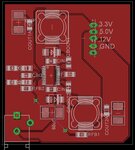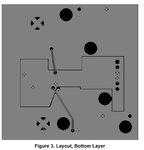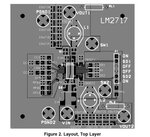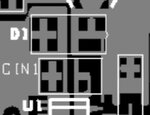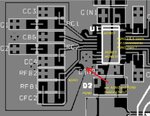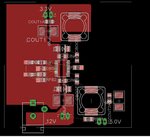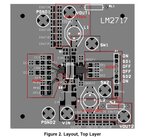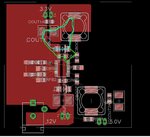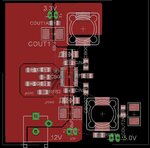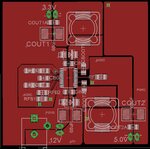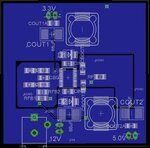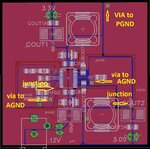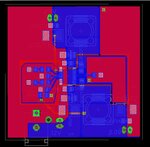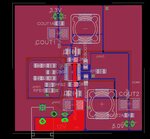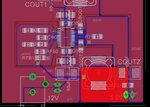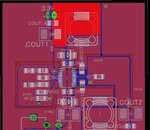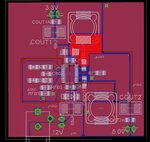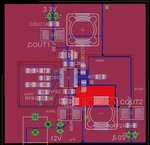KlausST
Advanced Member level 7
Hi,
your trace width is too small. There is relatively high current. And the current is pulsed.
A parameter how much EMI is sent out by your circuit is the diameter of the HF-current-path-
The yellow line shows the currrent path at the time when the switch inside the converter Ic is switched ON.
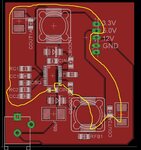
With your PCB layout the current has to travel almost around the complete PCB.
But it should be short and low impedance.
-> Use wider tracks and change your placement, so the way is short.
There are two paths for each converter channel. (in your circuit a total of four)
* HF path when switch closes (shown)
* HF path when switch opens = across diode
Klaus
your trace width is too small. There is relatively high current. And the current is pulsed.
A parameter how much EMI is sent out by your circuit is the diameter of the HF-current-path-
The yellow line shows the currrent path at the time when the switch inside the converter Ic is switched ON.

With your PCB layout the current has to travel almost around the complete PCB.
But it should be short and low impedance.
-> Use wider tracks and change your placement, so the way is short.
There are two paths for each converter channel. (in your circuit a total of four)
* HF path when switch closes (shown)
* HF path when switch opens = across diode
Klaus

